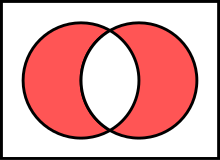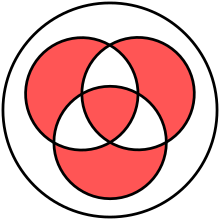5.8. Binary bitwise operations
Each of the three bitwise operations has a different priority level:
The & operator yields the bitwise AND of its arguments, which must be plain or long integers. The arguments are converted to a common type.
The ^ operator yields the bitwise XOR (exclusive OR) of its arguments, which must be plain or long integers. The arguments are converted to a common type.
The | operator yields the bitwise (inclusive) OR of its arguments, which must be plain or long integers. The arguments are converted to a common type.
5.8. Binary bitwise operations
Each of the three bitwise operations has a different priority level:
The & operator yields the bitwise AND of its arguments, which must be plain or long integers. The arguments are converted to a common type.
The ^ operator yields the bitwise XOR (exclusive OR) of its arguments, which must be plain or long integers. The arguments are converted to a common type.
The | operator yields the bitwise (inclusive) OR of its arguments, which must be plain or long integers. The arguments are converted to a common type.
Exclusive or
| This article needs additional citations for verification. (May 2013) |
 |
Venn diagram of  |
 |
Venn diagram of  |
Exclusive disjunction or exclusive or is a logical operation that outputs true only when inputs differ (one is true, the other is false).[1] It is symbolized by the prefix operator J[citation needed] and by the infix operators XOR (/ˌɛks ˈɔːr/), EOR, EXOR, ⊻, ⊕, ↮, and ≢. The opposite of XOR is logical biconditional, which outputs true only when both inputs are the same.
It gains the name "exclusive or" because the meaning of "or" is ambiguous when both operands are true; the exclusive or operator excludes that case. This is sometimes thought of as "one or the other but not both". This could be written as "A or B, but not, A and B".
More generally, XOR is true only when an odd number of inputs are true. A chain of XORs—a XOR b XOR cXOR d (and so on)—is true whenever an odd number of the inputs are true and is false whenever an even number of inputs are true.
Contents
[hide]Truth table[edit]
The truth table of A XOR B shows that it outputs true whenever the inputs differ:
| Input | Output | |
|---|---|---|
| A | B | |
| 0 | 0 | 0 |
| 0 | 1 | 1 |
| 1 | 0 | 1 |
| 1 | 1 | 0 |
0 = FALSE
1 = TRUE
Equivalencies, elimination, and introduction[edit]
Exclusive disjunction essentially means 'either one, but not both'. In other words, one is true if and only if the other is not true. For example, if two horses are racing, then one of the two will win the race, but not both of them. The exclusive disjunction  , or Jpq, can be expressed in terms of the logical conjunction ("logical and",
, or Jpq, can be expressed in terms of the logical conjunction ("logical and",  ), the disjunction ("logical or",
), the disjunction ("logical or",  ), and the negation (
), and the negation ( ) as follows:
) as follows:
The following table summarizes the operator precedences in Python, from lowest precedence (least binding) to highest precedence (most binding). Operators in the same box have the same precedence. Unless the syntax is explicitly given, operators are binary. Operators in the same box group left to right (except for comparisons, including tests, which all have the same precedence and chain from left to right — see section Comparisons — and exponentiation, which groups from right to left).
| Operator | Description |
|---|---|
lambda | Lambda expression |
if – else | Conditional expression |
or | Boolean OR |
and | Boolean AND |
not x | Boolean NOT |
in, not in, is, is not, <, <=, >, >=, <>, !=, == | Comparisons, including membership tests and identity tests |
| | Bitwise OR |
^ | Bitwise XOR |
& | Bitwise AND |
<<, >> | Shifts |
+, - | Addition and subtraction |
*, /, //, % | Multiplication, division, remainder [8] |
+x, -x, ~x | Positive, negative, bitwise NOT |
** | Exponentiation [9] |
x[index], x[index:index], x(arguments...), x.attribute | Subscription, slicing, call, attribute reference |
(expressions...), [expressions...], {key: value...},`expressions...` | Binding or tuple display, list display, dictionary display, string conversion |

























 425
425

 被折叠的 条评论
为什么被折叠?
被折叠的 条评论
为什么被折叠?








